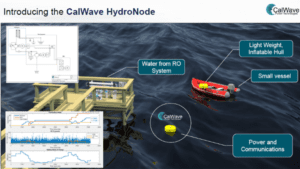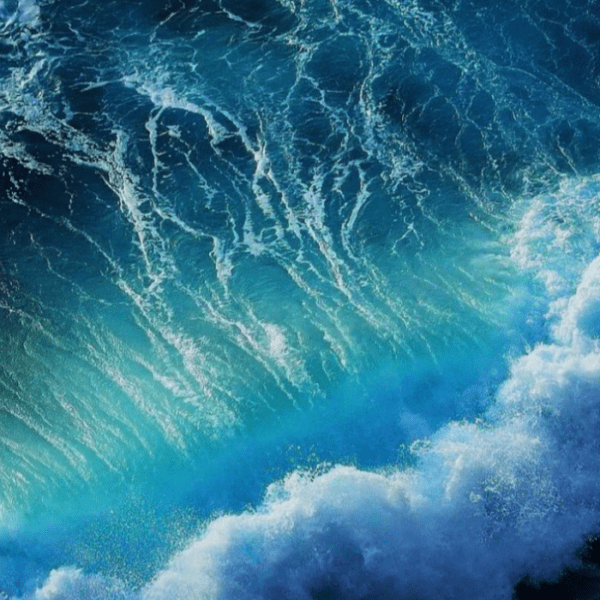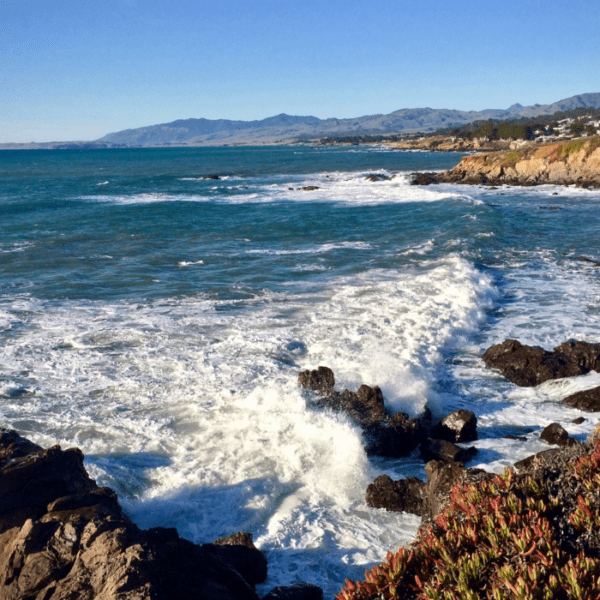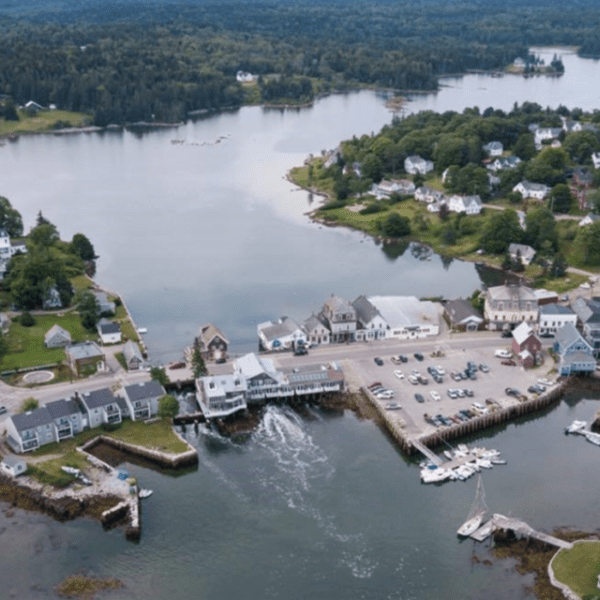We all know the saying: “Necessity is the mother of invention.” That’s the case with one technology developer in California, that is working to create a new device – powered by waves – that will make ocean water safe for human consumption.
“I’ve always been motivated by solving the most pressing problems society is facing,” says Marcus Lehmann, PhD, co-founder and CEO of the technology development company CalWave Power Technologies, Inc. “Access to drinkable water has been recognized by the United Nations in its sustainable development goal #6. Solving this problem is well aligned with the CalWave mission.”
In 2019, Dr. Lehmann and his team learned about a prize competition being offered by the U.S. Department of Energy (DOE) called “Waves to Water Prize.” Through the competition, DOE intended to spur development of new small, low-cost desalination devices powered by the kinetic movement of waves.
CalWave, a long-time member of the National Hydropower Association, decided to join the competition and has its sights set on the grand prize. The company is now competing with 9 other teams, each of which is building a desalination device. All 10 devices in the competition will be judged in 2022.
Why it Matters
Recognizing water as a critical resource, the White House tasked DOE with spurring innovation to meet the global need for safe, secure, and affordable water. One component of this initiative is the Waves to Water Prize, a competition geared to encourage development of new technologies in small, low-cost desalination devices powered by waves.
Marine energy technologies can help to facilitate off-grid “Blue Economy” market opportunities, such as disaster relief, remote underwater vehicle charging, autonomous sensors, and power generation for offshore energy, aquaculture, and oceanographic research industries. The U.S. Navy and U.S. Coast Guard are exploring opportunities for marine energy devices to provide power for maritime security systems, at-sea persistent surveillance, and communications.
Deep Dive
CalWave’s conceptual device … called the HydroNode … is expected to produce an average of 6 liters of fresh water per hour. The device will feature an inflatable hull and lightweight design. This will make deploying the device a fast process, and also make it easy to operate and maintain, especially important in disaster relief. In the DOE prize competition, the team utilized a digital twin to test its winch-type drivetrain architecture. A digital twin provides a virtual replica of the physical device that can be used for simulations and testing prior to actually building and deploying a device. CalWave credits the prize for the pushing its team to develop critical engineering expertise.

That’s exactly what the prize was intended to do. In announcing the prize, then Assistant Secretary Daniel Simmons said, “The Waves to Water Prize will accelerate the development of next generation desalination technologies through the power of competition amongst the best and brightest. We hope to demonstrate how marine energy can deliver a clean water solution that benefits communities around the globe.”
What’s Next?
“Our main development challenge in this point of the competition is to refine old simulations and test the reliability of our inflatable hull, then our team will build and assemble the system here in Oakland, California.” Lehmann said.
CalWave, along with the 9 other teams, are working to prove the viability of their systems, and to develop a plan to build and deliver the device for the final stage of competition. At that point, the competitors will have 180 days from September of 2021 to Spring of 2022 to build, deliver and test their devices at the Coastal Studies Institute’s (CSI) Jennette’s Pier in the Outer Banks of North Carolina.
The CSI team is excited to host the “Waves to Water” competition in 2022. “ These innovative technologies have tremendous potential in advancing marine energy solutions for our Blue Economy and in addressing global drinking water challenges,” says George Bonner, director of the North Carolina Renewable Ocean Energy Program.
For almost a decade, the state-funded North Carolina Renewable Ocean Energy Program — in collaboration with CSI and colleges of engineering at North Carolina State University, University of North Carolina Charlotte, and North Carolina A&T University – has been researching and developing new and sustainable ways to bring ocean energy technologies to market, while working with private industry to test devices in the waters off the Outer Banks. CSI operates a renewable energy testing site in partnership with Jennette’s Pier, a North Carolina Aquariums’ operated facility in Nags Head, North Carolina.
CSI – an NHA member – is a multi-institutional research and education partnership led by East Carolina University, in collaboration with North Carolina State University, University of North Carolina at Chapel Hill, University of North Carolina Wilmington, and Elizabeth City State University. CSI’s interdisciplinary research focuses on pressing coastal issues, including marine energy development.











